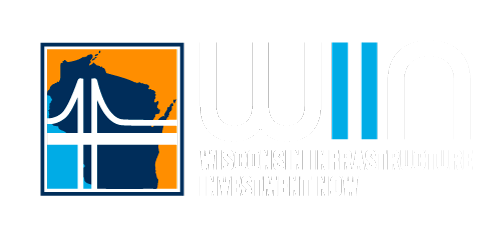
Wind
Wind Energy.
Wisconsin Infrastructure Investment Now supports responsible investment in utility-scale wind generation projects. Responsible investment in wind energy requires the third-party developer, public utility or cooperative to construct the wind facility with responsible contractors that utilize local, union labor to the greatest extent possible.
Why does WIIN support wind energy projects?
No Fuel Costs. Because wind turbines themselves run only on the power of wind generated, there is no need for fuel. Once the turbines are complete and installed, they do not use fuel or need to be connected to power to continue working.
Keep Wisconsin Family Farms Alive. The footprint of a wind turbine is very small. This allows farmers to lease property to wind facility owners while still farming the land. In other words, family farms—which are struggling to survive in Wisconsin—can earn extra income from leasing small portions of their land to wind facility owners.
Clean Energy. Wind energy does not rely on fossil fuels to power the turbines, which means that wind energy does not emit greenhouse gases during energy production.
Gets the U.S. Closer to Energy Independence. Many fossil fuels used in the United States are not sourced from within the United States. There is no need to import wind, which means construction of utility-scale wind generation facilities helps move us closer to energy independence.
Current Wind Projects Supported by WIIN.
Pattern Energy’s Uplands Wind Project.
What is Uplands Wind, and where will it be located?
Uplands Wind is a 600 MW wind energy project in Lafayette, Iowa, and Grant counties, Wisconsin. The name pays homage to the Driftless Area’s renowned and unique landscape and geological history.
Why develop wind in this part of the state?
Wind speeds in the area are some of the best in the state. As coal plants throughout Wisconsin shut down, more energy will be needed to make up for the lost power.
What are the benefits to local communities?
The Uplands Wind project represents a roughly $1 billion investment within Iowa and Lafayette counties. Throughout development, construction, and operations, residents can expect to see widespread direct and indirect job creation and economic investment.
Under Wisconsin’s revenue sharing formula, every megawatt of power that is built pays $1,667 into its township and $2,333 into its county annually for a total of $4,000 per MW per year. The 600 MW project is projected to provide on average more than $2.4 million per year to local communities, which totals $72 million over the first 30 years. The stable, long-term funding will contribute to efforts such as improved quality of education, services, roads, and first responder capabilities for the community.
How many jobs will the project create?
Approximately 450-600 workers will be on-site during construction, taking place over one or two years. Local workers and subcontractors will be involved to the greatest extent possible – from building access roads and turbine foundations to assembling and installing turbine components. Subcontractors will be engaged to conduct civil work – grading, excavation, concrete – electrical work, and mechanical assembly.
What is the project timeline?
Pattern Energy began developing the project in 2020. The development period (before construction of the wind farm) includes many important, necessary steps including obtaining options for land easements, collecting meteorological data, performing environmental studies, and working through the permitting processes, to name a few. This can typically take anywhere from two to five years. Depending on factors such as seasonal conditions and final project size and design, construction is expected to last between one to two years.
How will Uplands Wind be regulated?
The Public Service Commission of Wisconsin (PSCW) will assume jurisdiction over the project.
What are the setback requirements for the turbines?
Under the current PSCW rules, a wind turbine must be set back 1,250 feet from a neighboring residence if that neighbor is not also a wind turbine host. The state regulations governing turbine siting are dynamic, meaning they change with the size of the turbine. The taller the turbine and the longer its blades, the larger setbacks.
How will Uplands Wind address impacts to land during construction?
Most of the impacts during construction are temporary and will be restored upon completion of construction. Each wind turbine typically needs around only one-two acres of land after construction, allowing landowners to continue farming around them.
Is there money set aside within the project budget for road repairs?
Yes, Pattern Energy will obtain Road Use Agreements locally to ensure roads are upgraded to allow turbines to be safely transported on site. In addition to building and paying for access roads that are accessible for the farmers on whose property they are built, public roads used during construction will be left in better shape than they were before.
Testimonials
Hear from REAL farmers and communities that have had experienced a renewable energy project with Pattern Energy.



